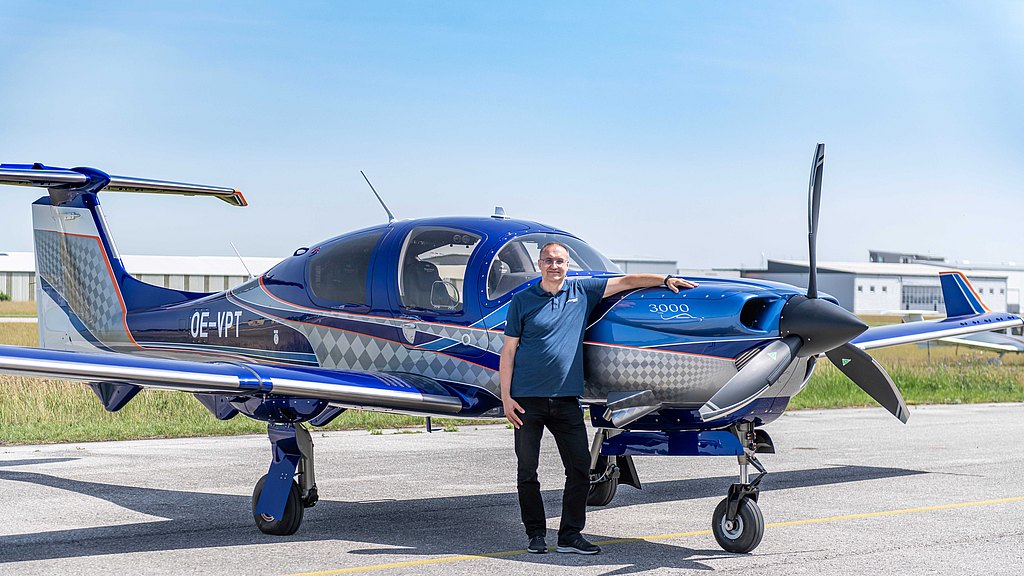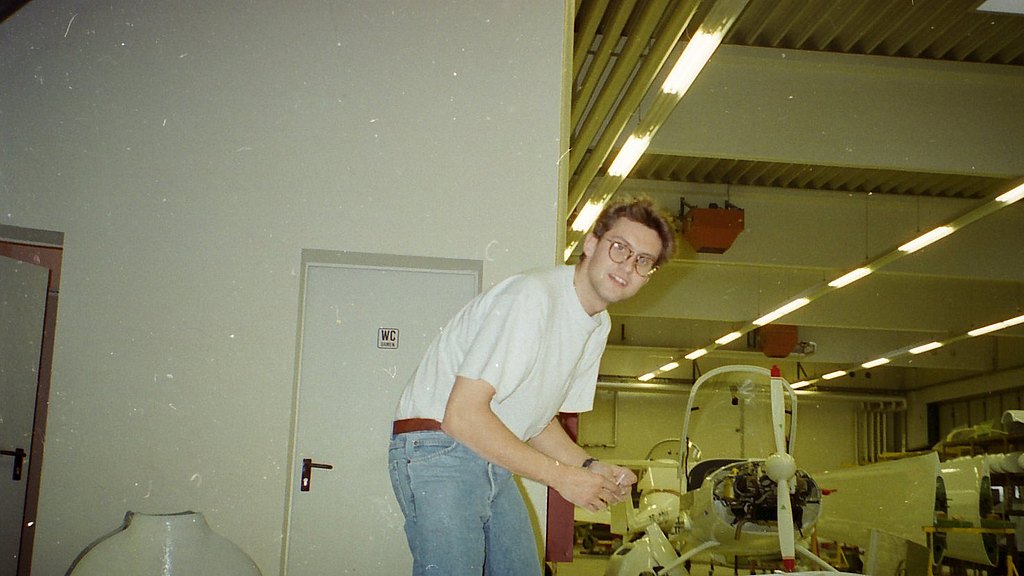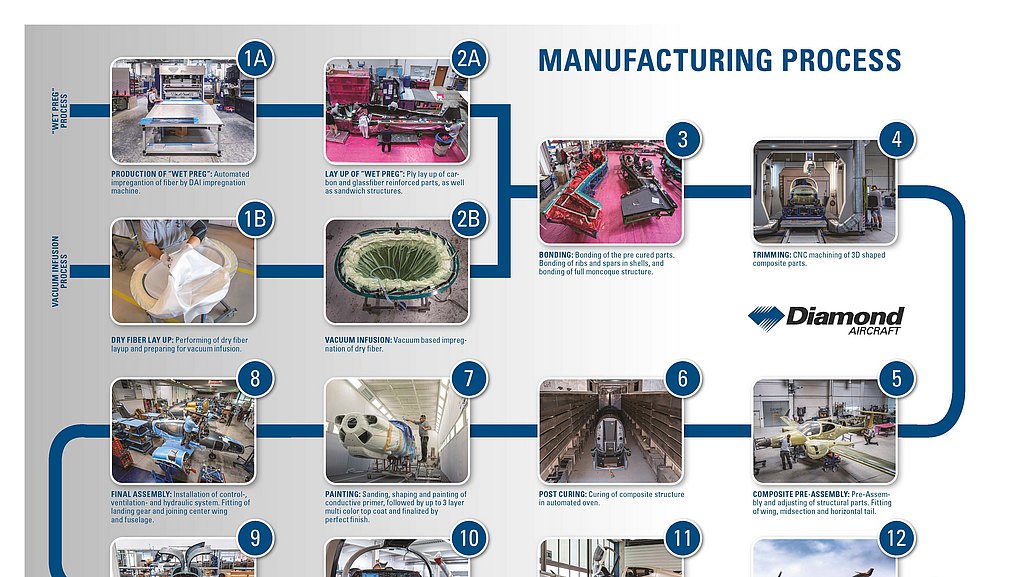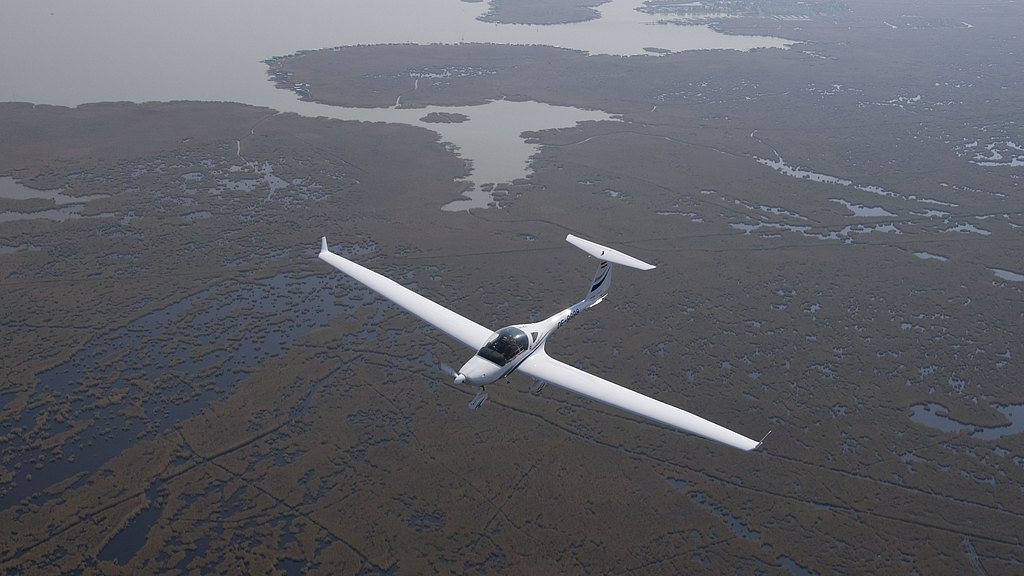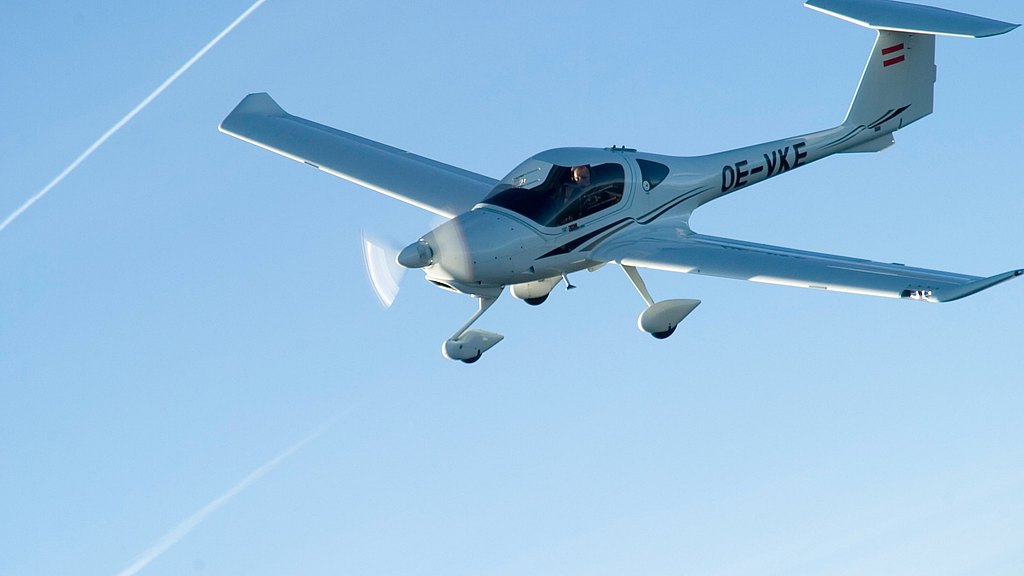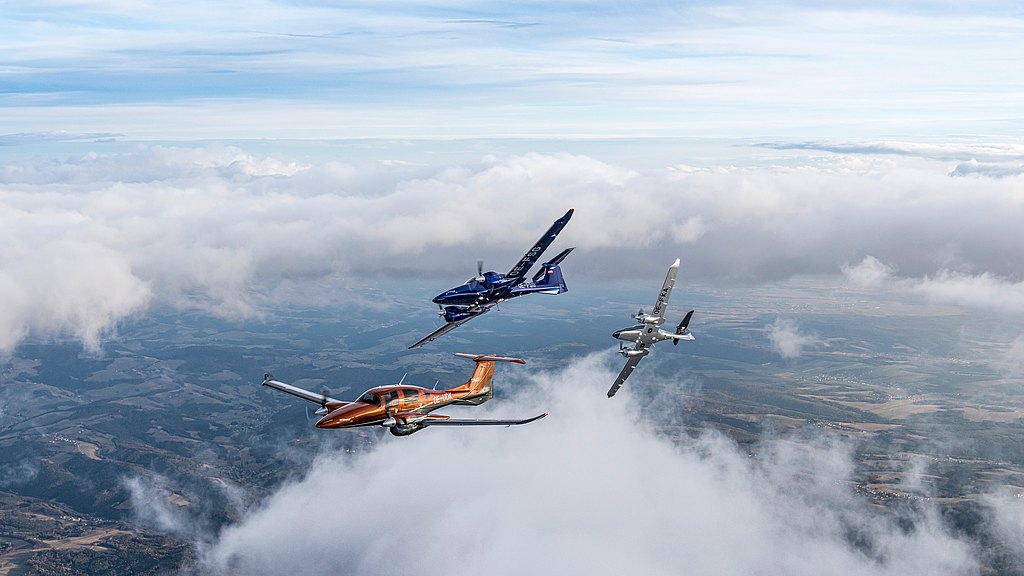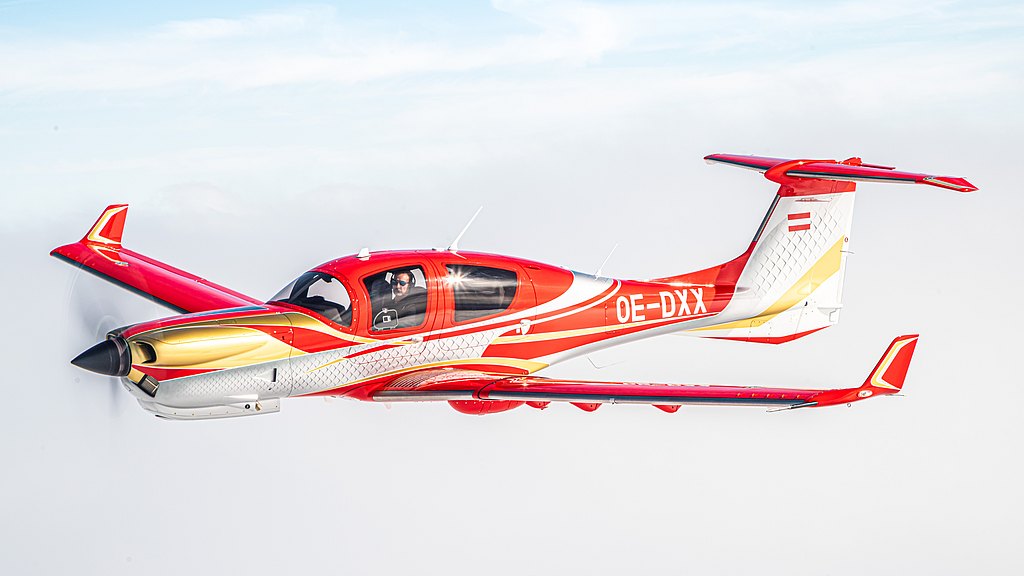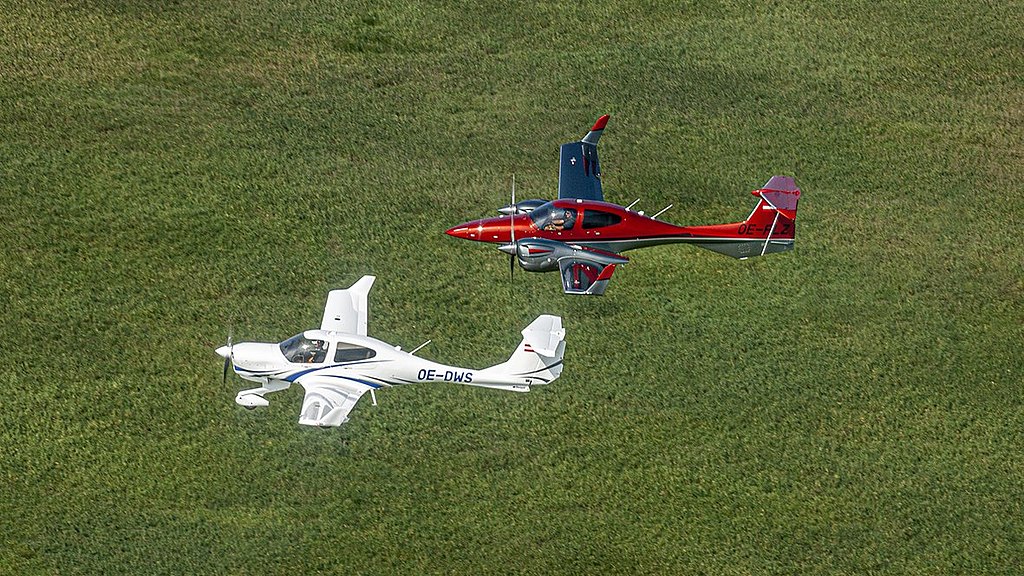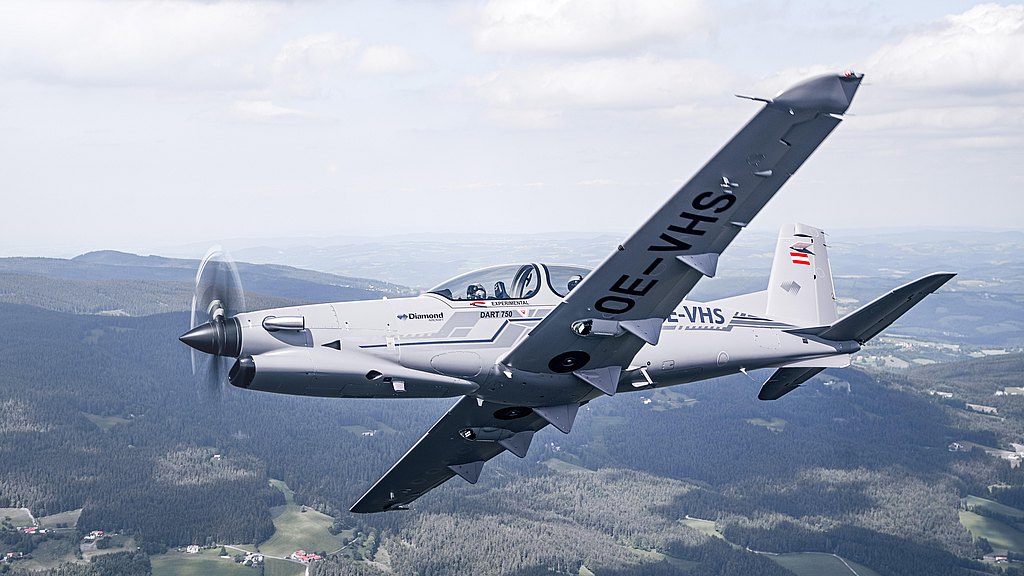About Manfred
Manfred was born in 1972 in Wiener Neustadt (Austria), the same town Diamond Aircraft’s HQ is calling its home. He is married and has one daughter. Manfred discovered his passion for flying in his early youth when he suddenly found flying incredibly cool. At that time, he had no idea that this would shape his entire life. Due to his visual impairment, he thought that he could not become a pilot, but nevertheless decided to pursue a career in aviation and, at the age of 14, went to a school for aeronautics in Langenlebarn. This ‘Bundesfachschule für Flugtechnik’, a then three-year (now four-year) vocational secondary technical school, is a unique training facility in Austria for young aircraft technicians located directly at the Brumowski Air Base. Fliegerhorst Brumowski (ICAO code: LOXT) is a military airfield with barracks of the Austrian Air Force and home to the air support squadron as well as the Fliegerwerft 1, which is responsible for overhauls and maintenance. So, it was obvious that Manfred, after graduating in 1989, completed his compulsory military service at this Air Base (editor’s note: Male Austrian citizens above the age of eighteen are subject to compulsory military service and have the right to choose between military and alternative service, e.g. with certain NGOs. Female Austrian citizens have the possibility to enter voluntary military service). Right there he learned about an aircraft manufacturer in Wiener Neustadt and soon became a part of our production department in 1990. From then on, he had really caught the aviation bug and his passion for flying was re-awakened. He obtained his private pilot's license at the then Diamond Sportfliegerklub, and in addition to his technical education, he also acquired the aircraft maintenance certificate category 1 (state-certified technician) in order to expand his skills. One of the first product developments he was involved in from the beginning was the DV20 and since the mid 90's he has been Head of Final Assembly, a position he still holds today.
Editor’s note: Diamond Aircraft was founded as “Hoffmann Flugzeugbau” in 1981 in Carinthia (South of Austria). Following several changes in ownership, location and naming, one of them HOAC (Hoffmann Aircraft) in Wiener Neustadt (Austria), the company finally received the name Diamond Aircraft headquartered at the same location as HOAC.
You've been with us for an incredible 33 years now. How did it come about?
I've always been fascinated by flying. However, I thought at the time that I had no chance of a career as a pilot because of wearing glasses. Nevertheless, I wanted to work in the aviation sector and went to the ‘Bundesfachschule für Flugtechnik’ in Langenlebarn. I also did my compulsory military service there. By chance, someone there told me that an aircraft manufacturer in Wiener Neustadt was looking for someone to work in final assembly. At that time, the company was not yet so well known. The big names one was looking for as employers were the Austrian Armed Forces, AUA (Austrian Airlines) or Lauda Air. In any case, I applied for the job, and that's how I ended up starting at Diamond Aircraft, then still called Hoffmann Aircraft, in June 1990.
What was your first impression of the company?
I was very happy to get a job in aviation in Austria. The market was not that big. So, I felt very grateful that I was allowed to learn here. At that time, it was still a very young team and you felt well integrated right away. You were immediately part of the whole. Many colleagues from back then are still here today. What impressed me the most was the many opportunities you had. You could always look over everyone else's shoulder. Also, the opportunity to work with someone like Martin (Volck), who took you by the hand right away, was incredible. Everyone had the opportunity to share in the vast wealth of experience. The knowledge transfer was huge. Every day I was able to expand my know-how. The connection between production and engineering was very close. Of course, all of this was a bit formative in that you could learn everything down to the smallest detail, directly from your colleague or supervisor if you wanted to.
Tell us a bit about your job and how it may have changed over the years.
These days, managing people is at the top of my list of things I do. I help my team solve problems daily. I try to pave the way for us to do our jobs effectively. Of course, I don't always succeed. I'm very proud of my team for the way they handle the daily challenges and tasks. Working in final assembly is really something special. From all the individual parts we get from Composite and from countless suppliers, we make a complete aircraft. Apart from that, I take care of things like issuing documents for production test flights, evaluating technical problems, advising management, and clarifying whether we are allowed to deliver an aircraft with a certain configuration to a certain country at all. Our jobs require a high level of responsibility - at all levels.
What is most fulfilling and a source of pride: seeing the customer's joy when taking delivery of a new aircraft. What has changed? When I started, you could still make more decisions yourself. That's often no longer possible today. The company has grown and is on a completely different level. The speed is also different today. It used to be quite normal and comprehensible to everyone, including outsiders, that solving a problem could take several days. Today, we are sometimes talking about only hours. A big transformation for me personally is the change of language from German to increasingly English. What have I learned in the last few years? How important it is to clearly communicate goals to team members. What is the goal and why is it so.
What would you name as your greatest (work) success?
We have many successes. Every product launch is a success, every delivery a challenge. What I would consider a success is when you look at the finished airplane, walk around it and realize how incredibly fantastic it looks and how much effort went into it. You see a wing and it's as perfect as a mirror. There's not a speck of dust, not a surface flaw, and you just go, "Wow!" Or the assembled interior of our aircraft from high quality materials that impresses every customer. It's nice to be a part of this greater whole; one cog of many that contributes to the success.
And what was or is your biggest challenge?
I see my biggest challenge as my efforts to not make any safety-related mistakes within my sphere of influence, thus handing over a safe aircraft to every customer. From a people management perspective, it's the challenge of trying to treat everyone equally fairly every day. From a product perspective, it's meeting delivery dates even though parts or capacity may be missing, and technical issues may cause delays.
Do you have any advice or words of wisdom for people who want to work in production with us?
I wouldn't presume to. Everyone has to find wise words for themselves. One tip perhaps: try to think outside the box and communicate with other departments to gain more knowledge about the product and aviation. Then many things are open to you. Especially in our company. Everyone who contributes has the opportunity to get ahead. Maybe not always right away, but eventually a door will open.
Which Diamond aircraft do you like the most and why?
I have two favorites. Technically, from the capabilities of the aircraft, how it is built, what luxury it offers, it is the DA62. It is one of our most complex and luxurious aircraft and certainly one of the most important developments for the company after the foundation we laid with the DV20. I think the DA62 embodies everything we've done in terms of aircraft innovation over the last 33 years. It’s a true masterpiece. As a single-engine equivalent, there is of course also the DA50 RG. But emotionally, my second favorite is the HK36 Super Dimona. This probably has something to do with the fact that I learned to fly on it. It is wonderfully simple and unagitated. When you sit in this aircraft, turn off the engine and feel it gliding, it's incredibly uplifting. That feeling that the air is carrying you. Everything is suddenly slower and you are completely with yourself.
As mentioned - 33 years at Diamond Aircraft and just recently your team and you completed the 3,000th aircraft. So, we're interested to hear how you see Diamond's future.
An important step will be the certification of the DART. From there, the next product will surely follow. We should also stay true to our line with training aircraft with the DA40 and DA42. This is how a student pilot gets used to a cockpit. Once you know the advantages, you usually don't want to change brands. From my personal point of view, it would be nice to produce more entry-level aircraft like the DV20/DA20. You will win the pilots of tomorrow, who may be able to afford a DA50 RG or DA62 the day after tomorrow.
Looking for a new job?
We are hiring! Take off and join the Diamond Aircraft Family. Browse our current career opportunities and apply today for your new dream job.
We'd like to hear from you!
We hope you enjoyed reading. Let us know if you liked this story. Have we missed something you always wanted to know? Any preferences from which department one of our next “Diamond Faces” should be? Drop us an email. We are curious to hearing from you!
